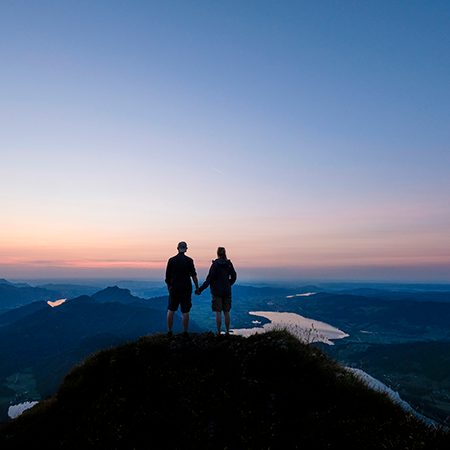How a portable ski chalet from the 1960s has captured the attention of a new generation
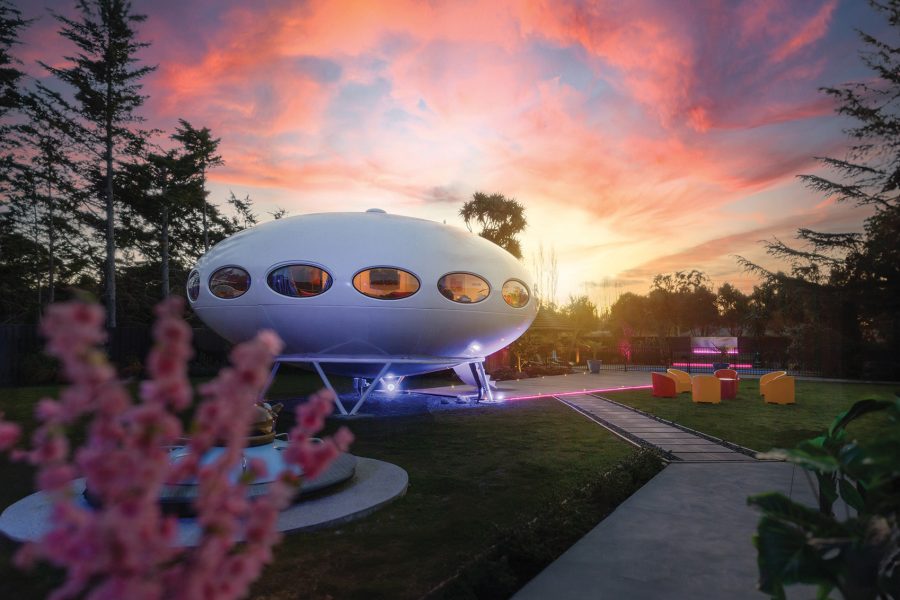
The white dome glows red and purple, reflecting the lights that surround and illuminate it. At the push of a button, stairs descend with a halting groan. I half-expect an alien to materialise; instead, I’m greeted by a collection of Teletubbies lined up along an oval window.
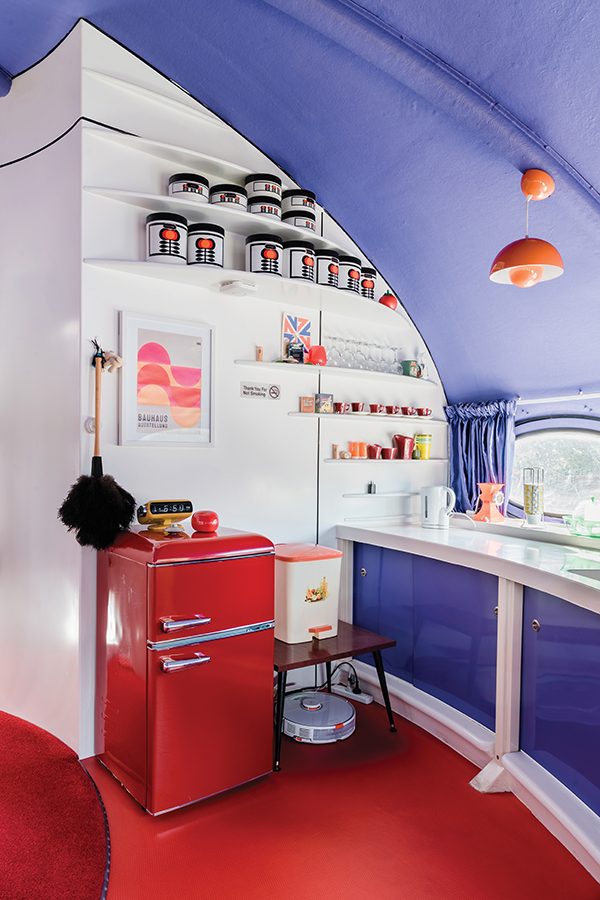

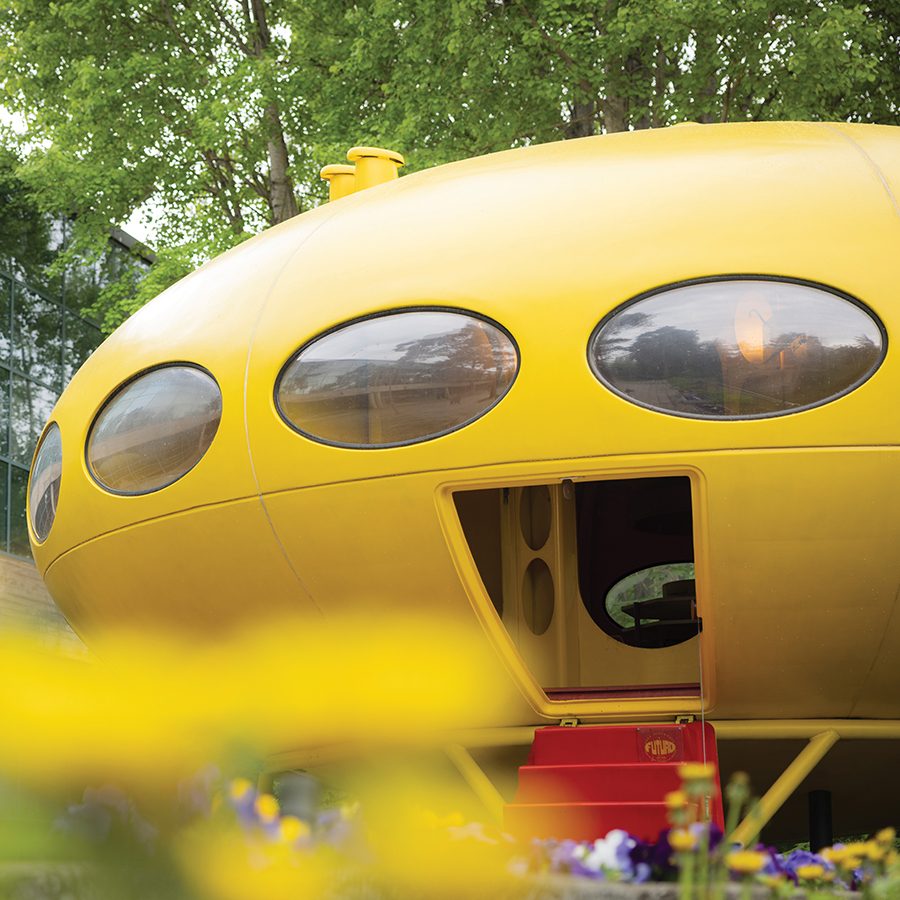
Credit: Pekka Rousi
It’s a sunny morning when I arrive at the Area 51 Futuro House Resort in Ohoka, a small, rural town on the outskirts of Christchurch. It’s just one of the Space Age pods like these that are dotted around the world. Originally built as ski huts in the late-1960s and early-1970s, the surviving Futuros have gained a cult following for their peculiar, UFO-like design.
Futuro House has an outsized presence in New Zealand, which briefly manufactured them in the ’70s. “Dad used to drive me past one of these when I was a kid, and I believed it was a real alien spaceship. It sort of stuck in my head for 30 years,” says Futuro enthusiast and Area 51’s owner Nick McQuoid, who went to great lengths to refurbish this near-50-year-old pod and now rents it out on Airbnb.
The retro-futuristic aesthetic extends to the interior. Eight metres wide and four metres high, the house has a purple ceiling with orange pendant lights, while its carpets and curved sofa are crimson, with geometric throw cushions in lava-lamp hues and curious furniture pieces everywhere you look. Before I adjust to the space, it feels like the walls, adorned with Bauhaus prints, are closing in.
The under-sofa storage offers everything from a Mr Potato Head figure to Battleship, Twister and The Game of Life. Get bored of them, and you have a hot tub, sauna and swimming pool in the outdoor area, with an adjoining retro arcade games room.
Deceptively large, the pod sleeps up to seven and has a kitchenette, where everything from the taps to the Tupperware comes in shades of orange and yellow plastic. A wall of authentic period gadgets features a Weltron Space Ball, a radio and an eight-track tape player, the flying saucer-like Panasonic Orbitel TV, and the space helmet-shaped JVC Videosphere TV.
When it’s time to sleep, I clamber into a bunk bed. Once the lights are out, I feel a little spooked by my surroundings. Is it the neon glow of the grounds, the low ceiling or the feeling that I’m sharing my home with an extraterrestrial being? In any case, it’s a night I’ll never forget.

Credit: Bettmann/Getty Images

Credit: Pekka Rousi
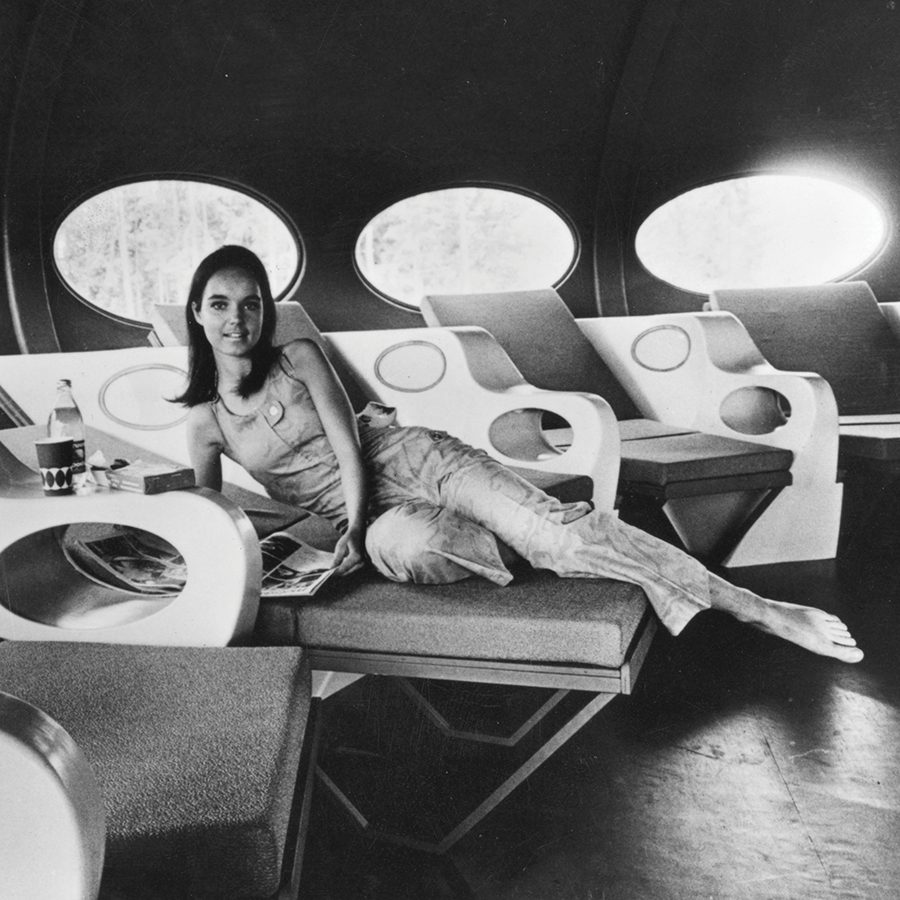
Credit: Keystone/Getty Images
Space age holiday home
When Finnish architect Matti Suuronen was commissioned to create a transportable ski cabin in the late ’60s, he landed on a blueprint that he saw as the future of affordable, portable housing. Designed for mass production and easy assembly on rough terrain, the Futuro houses’ ellipsoid form and use of fibreglass-reinforced plastic were unconventional for the time. The mobile pod was made of 16 segments that could be delivered separately and bolted together, while the durable, lightweight material offered excellent insulation. In a period defined by a fixation with space exploration, the finished product resembled a flying saucer.
But when the cost of plastic tripled in 1973 due to an oil crisis, Futuro production waned, ceasing completely by 1978. Fewer than 100 were constructed and only about 60 are left.
The Futuro made its comeback in the ’90s as a feature in art installations, books and documentaries: a visual representation of a bygone era. McQuoid, a key player in the Futuro revival, has owned five of them over the years. After the 2011 Christchurch earthquake, he was left feeling hopeless, and he turned to his childhood memories for inspiration. He airlifted his Area 51 Futuro, originally a fishing hut on the west coast, by helicopter to Ohoka in 2018. It took a full year to restore it after it had been sitting out in the wilderness for 40 years – grinding off the mould, repainting it and sourcing the decor. He had a penchant for ’70s interior design and aimed for as accurate a recreation of the original Futuro as possible – or, as he puts, it “a giant encapsulation of awesome”.
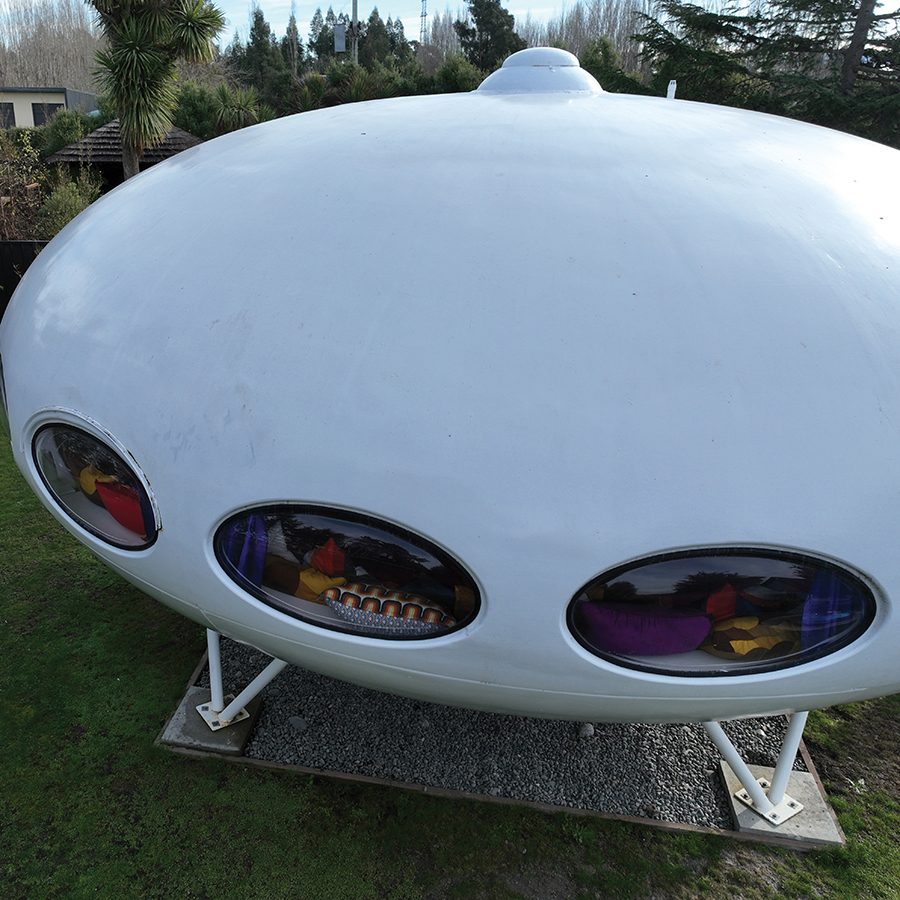
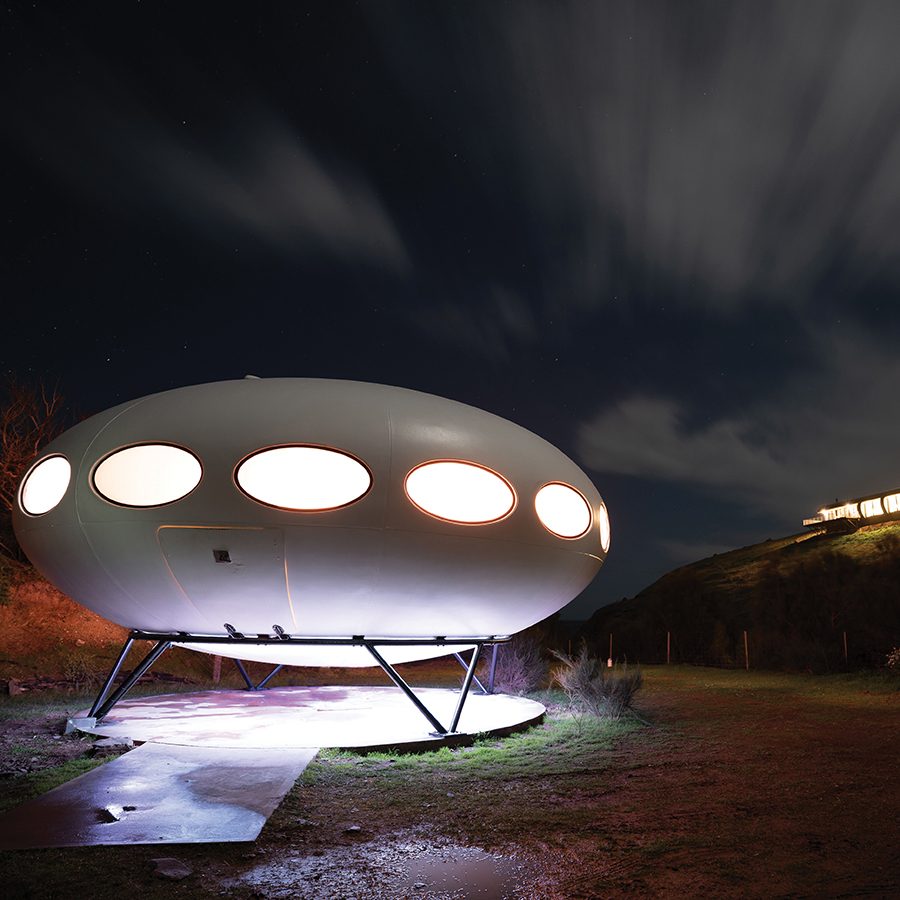
McQuoid’s hard work paid off: his Futuro House was awarded New Zealand’s Best Unique Stay in 2022. In 2024, it was listed as a Category 1 historic place by Heritage New Zealand .
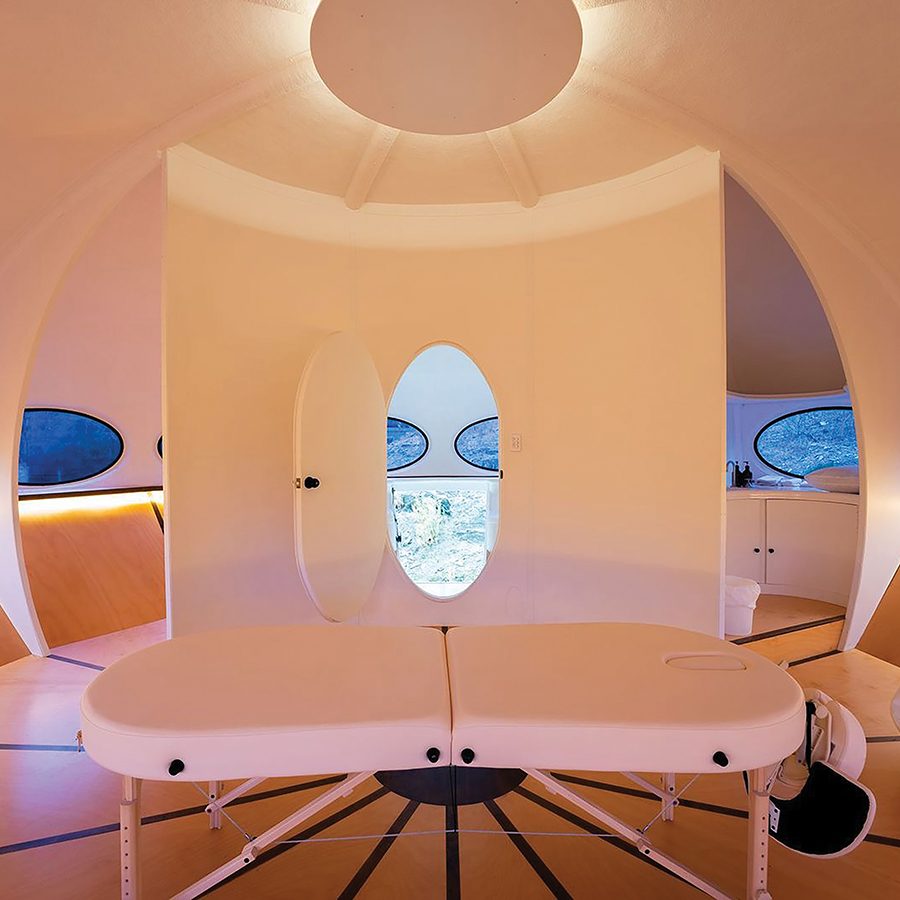
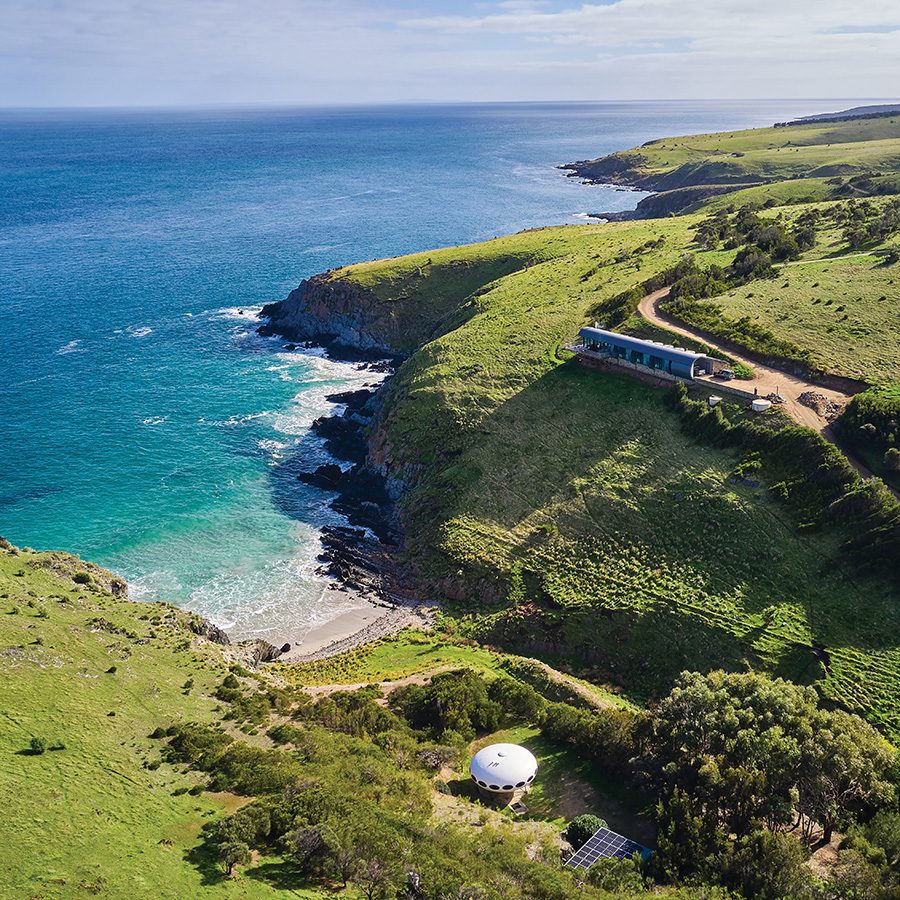
While the Futuro may not have taken off as a prefab home, Suuronen would probably be surprised to discover how it continues to captivate. “I want the kids to see it,” McQuoid says. “They walk around and actually believe they’ve found a real UFO, just like how I reacted way back. When I’m gone, someone else will have it. Who knows? It’ll probably take off and have its own life for the next 200 years.”
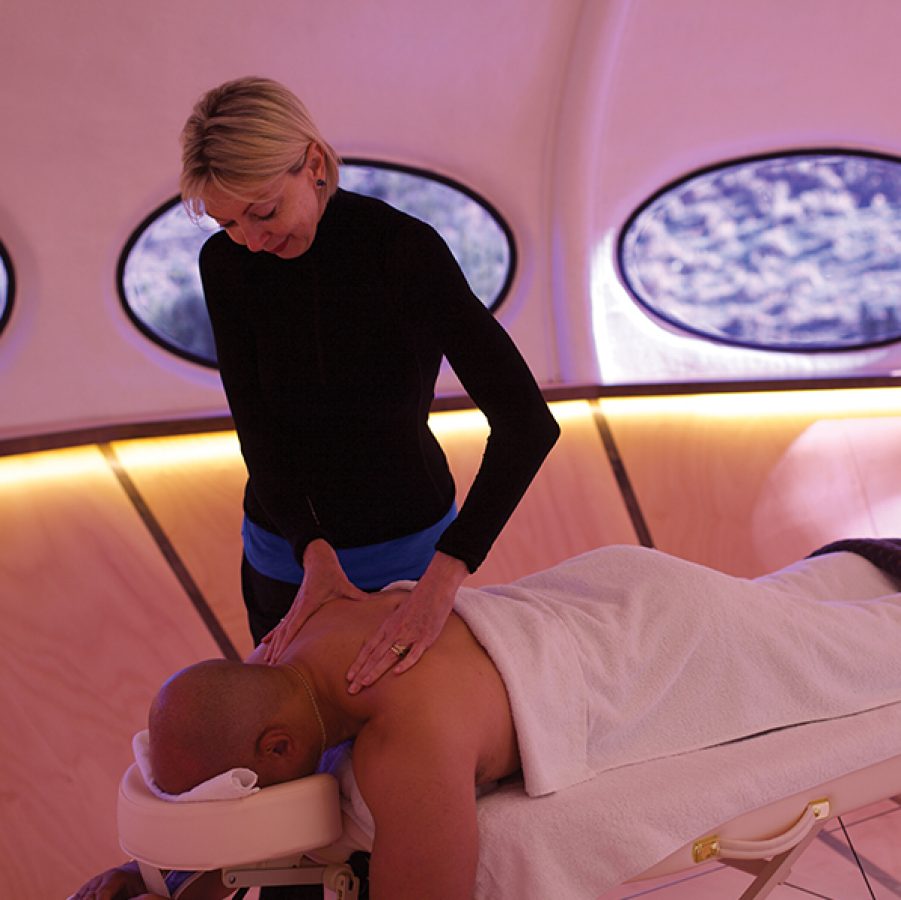
Peace in a pod
Four more Futuro Houses to visit
1. Exhibition Centre Weegee, Finland
Head to Finland for the very first mass- produced Futuro House, which was owned by actor Matti Kuusla from 1968 to 2011. It’s open to the public from mid-May to mid-September.
2. Joshua Tree National Park, United States
The Futuro looks perfectly at home amid Joshua Tree National Park’s Martian landscape. Experience an off-grid glamping retreat with solar-powered amenities, a fire pit, a barbecue grill and an outdoor shower.
3. University of Canberra, Australia
After an extensive restoration project, including the installation of automatic stairs, the Futuro opened on campus in 2014.
It serves as a study, meeting and tutorial space, complete with Wi-Fi.
4. Naiko Retreat, Australia
Originally located in North Adelaide before making its way to Deep Creek, South Australia, this fancy Futuro is now a wellness hub available to guests who book a massage with the luxury getaway’s preferred therapists.
More inspiration
Christchurch travel information
- China – the Chinese Mainland, Hong Kong SAR, Macao SAR and Taiwan Region
- Hong Kong SAR - English
- Chinese Mainland (China) - English
- Taiwan, China - English
- 香港特別行政區 - 繁體中文
- 中国內地 - 简体中文
- 中國台灣 - 繁體中文
- Africa
- South Africa - English
- Asia
- Bangladesh - English
- Korea - English
- Singapore - English
- Cambodia - English
- 한국 - 한국어
- Sri Lanka - English
- India - English
- Malaysia - English
- Thailand - English
- Indonesia - English
- Maldives - English
- ประเทศไทย - ภาษาไทย
- Indonesia - Bahasa Indonesia
- Myanmar - English
- Vietnam - English
- Japan - English
- Nepal - English
- Việt Nam - tiếng Việt
- 日本 - 日本語
- Philippines - English
- Australasia
- Australia - English
- New Zealand - English
